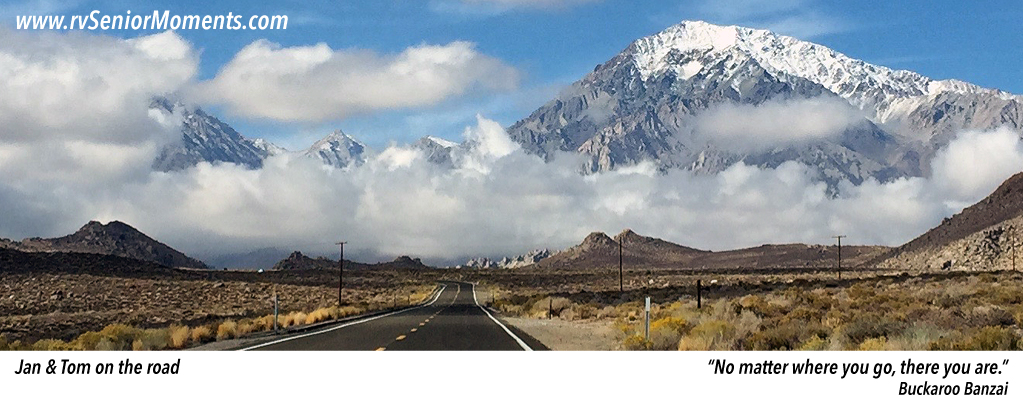Our 3rd RV Solar Installation
Oops! Actually, it’s our 4th Solar install . . .
First Solar Install (2006) Second Solar Install (2009) Third Solar Install (2012)We’ve already booked campsites for much of the upcoming year and at first blush CA has some pretty, pretty, pretty, pretty good campgrounds. (Apologies to Larry David.) Even better, several campgrounds are very close to us in Mariposa.
What does this has to do with solar?
Many of the prime (ocean front) campsites have no hookups at all . . . no water, no sewer, and no electric power. We can get by without the first two, but not the last, electric. After a day or two without an external power source, our RV batteries would die.
What to do?
Use our generator . . . the electrical output from our on-board generator is as good as plugging our RV into a power source. However, generators are loud and stinky. Also, RV parks typically put restrictions on when you can use them, and, finally, campers (including ourselves) don’t like generators.
Add more batteries . . . we’re going to add two more so we have a total of four. That alone increases our staying power. But with no way to charge these batteries, we’re not much better off.
Solar power . . . since CA is a very sunny state (about 68% yearly), solar should give us the charge we’ll need.
So here’s the plan . . .

Because of the cost involved, this is a year-long project. We figured now was the time to act as we can take a 26% tax credit on our solar install – which ends this year. Pretty, pretty, pretty, pretty nice.
As you can see, we kind of favor Victron equipment.
Victron Smart Shunt
The first part of our solar install was a decent battery monitor so we know what shape our batteries are in.
Our current battery monitor system is a 21-year-old wall panel . . .

We really want to know more.
To do so, we installed a Victron Smart Shunt on our battery bank.


This shunt uses Bluetooth so we downloaded an app on our phone and/or tablets, and check on more stuff than we need to:





Couple thoughts:
1. California is a wonderful warm sunny place, but not so much right on the ocean. You may not get the solar performance you’re looking for with all the clouds and fog.
2. Great panel and controller choice, in my opinion. I also use a Victron controller and monitor it with an app on my phone. So many people try to build a system with 12 volt panels that just don’t measure up to what you are doing.
3. I did wonder why you use 4 AWG on the input side with a 15 amp fuse. Seems to me you would be fine with #12.
Tx for the catch, Bob. I changed it to 10 AWG.
Another great job done, T!
Nj
Tom, you will never ever run out of projects.. will you? Amazing. You sure are the bold adventurer. Only 2 more days until your B’day. Wishing you some fun times and some great cake! Sister Mary
Sounds like a fun project!
One suggestion, it is good practice – and in the marine world a requirement – to add a shutoff switch in the power feed to the inverter.
A switch there is necessary to fully disable the inverter to safely work on it or the AC circuits it feeds. Otherwise you would need to shut down all DC power with your main battery switch which would be pretty inconvenient. Also, all big inverters consume some power even when “off”. Magnum for example about 350mA, enough to flatten your batteries in a couple weeks while in storage. I used to do marine DC system installs and this was a very common issue. That switch will allow you to fully disable the inverter and still leave your solar charging active.
Great idea. Do you have a source for a 50A AC make/break disconnect?
Do you mean something like this?
VictorsHome Changeover Switch LW28-63 3 Positions 12 Terminals Universal Rotary Cam Selector Latching Switches 690V 63A https://www.amazon.com/dp/B07N11925K/ref=cm_sw_r_awdo_navT_g_EQJB32G5ZXSGMB3B3W32?psc=1
More like this . . https://www.solar-electric.com/imo-pe69-3063-3-pole-63a-isolater.html